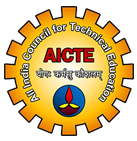About Distance M.Tech in VLSI Design
M.Tech. in VLSI Design Distance is a 2-year postgraduate degree that is divided into four semesters. The term "VLSI" stands for "Very Large Scale Integration" is a process used to build integrated circuits (IC) from millions of silicon metal oxide (MOS) transistors. In 1970, VLSI began operations. VLSI is a revolutionary development in electronics that frees designers from restrictions on device size and manufacturing costs. In this course, students will gain knowledge on advanced applications of integrated circuits, high-performance computers, and other pertinent areas.
Through M.Tech VLSI Distance Course students will be taught how to build circuits and architect systems employing embedded equipment such as memory and CPU. It is advantageous for students to train professionals in the field of VLSI design who play a variety of roles at the intersection of design and technological advancement. VLSI is a revolutionary development in electronics that frees designers from restrictions on device size and manufacturing costs.
Who Should Pursue Distance M.Tech in VLSI Design
Individuals who fit certain requirements and have particular objectives may find that pursuing a distance M.Tech in VLSI Design is a good alternative. The following people could choose to take this into consideration:
Working professionals
Distance M.Tech programs are frequently created to meet the needs of working professionals who seek to advance their knowledge and abilities while maintaining a full-time employment. A distance M.Tech. can give you a flexible route to VLSI design specialization if you already work in the semiconductor or electronics industries.
Graduates with Relevant Backgrounds
To expand their knowledge and expertise in the industry, people with bachelor's degrees in Electronics and Communication Engineering, Electrical Engineering, Computer Engineering, or related fields may choose to explore pursuing a distant M.Tech in VLSI Design.
Remote Learners
Distance M.Tech programs are especially ideal for students who are unable to attend regular on-campus classes owing to travel restrictions, professional obligations, or other personal factors. Distance learning can be a good option for you if you value flexibility in your learning schedule and have solid self-management skills.
Self-motivated People
Successful distance learning necessitates a high level of motivation, self-control, and time management. You are more likely to succeed in a distance M.Tech degree if you are proactive and can maintain your commitment to your studies without constant supervision.
Professionals Pursuing Career Advancement
If you are an electronics or semiconductor industry professional looking to enhance your career and believe that specializing in VLSI design would lead to new chances, a distance M.Tech can be a helpful tool to help you reach your objectives.
People with Family or Personal Commitments
Because of their flexibility, distance M.Tech programs are a good choice for people whose family or personal obligations prevent them from attending regular on-campus classes
International Students
Students from outside of the United States who want to study VLSI design at a higher level without moving can benefit from distance M.Tech programs.
Is M.Tech through distance education valid?
Regarding the legitimacy of MTech distance learning, there are certain concerns. There are a substantial number of universities conducting and offering admission to MTech degree programs in the distant mode, but not all of them have gone through the UGC and DEB approval procedures. Candidates who wish to enroll in the Master of Technology (MTech) program must confirm that the universities they have chosen have been approved by the appropriate educational authorities.
University approvals to check before pursuing M. Tech distance education.
Anytime, Anywhere



Are You Eligible?
Education
Students with a B. Tech degree are eligible to apply for admission to the appropriate M. Tech program.Students who have earned an M. Sc. in science, mathematics, computer science, electrical engineering, or a related discipline are eligible to apply for admission to the appropriate M. Tech. program.MCA graduates may also apply for admission to M. Tech. computer engineering branches that are pertinent to them.
Fees for M. Tech Distance Education
50K – 60K Per Year (As fees varies according to universities)
Assessment & Examination
The following steps are commonly included in the exam and evaluation process for M.Tech Engineering students using distant learning:
Internal assessment (IA) : is a part of the evaluation that is based on work done on assignments, tests, and other coursework throughout the semester. IA is normally worth roughly 25% of the course's overall grades, though this varies from institute to institute.
The term-end examination (TEE): is a thorough test that is given at the conclusion of the semester. Normally, the TEE accounts for 75% of the course's overall grades.
Project: In certain institutes, the evaluation procedure includes a project. A research article, a design project, or an internship report are all acceptable project types. Although the weighting of the project varies from institute to institute, it normally accounts for 10% of the course's overall scores
For each course, the required passing percentage is typically 40%. But certain institutions might have a greater pass rate.
Curriculum
|| Semester I
| S. No. | Subject Code |
| MEVD 101 | Advanced Mathematics |
| MEVD-102 | VLSI Design Concepts |
| MEVD-103 | Modeling of Digital Systems using HDL |
| MEVD-104 | Advanced Digital Signal Processing |
| MEVD -105 | VLSI Technologies |
|| Semester II
| S. No. | Subject Code |
| MEVD-201 | CMOS Mixed Signal Circuit Design |
| MEVD 202 | ASIC Design and FPGA |
| MEVD -203 | Embedded Real Time Operating Systems |
| MEVD 204 | Embedded System Design |
| MEVD-205 | System on Chip |
||Semester III
| S. No. | Subject Code |
| MEVD 301 (A) | CAD for VLSI Circuits |
| MEVD 301 (B) | Design for Testability |
| MEVD 302 (A) | VLSI SIGNAL PROCESSING |
Job options
Jobs directly related to your degree include:
| VLSI Design Engineer | ASIC (Application-Specific Integrated Circuit) Design Engineer |
| Design Automation Engineer | Analog/Mixed-Signal Design Engineer |
| FPGA (Field-Programmable Gate Array) Design Engineer | Physical Design Engineer |
| CAD Engineer | RF (Radio Frequency) Design Engineer |
| Verification Engineer | SoC (System-on-Chip) Design Engineer |
| Memory Design Engineer | Microprocessor Design Engineer |
Jobs where your degree would be useful include:
Industrial Designer
User Experience (UX) Designer
Product Designer
Furniture Designer
Automotive Designer
Consumer Electronics Designer
Packaging Designer
Exhibit/Exhibition Designer
Design Researcher
Design Strategist
3D Visualization Artist
Entrepreneur








